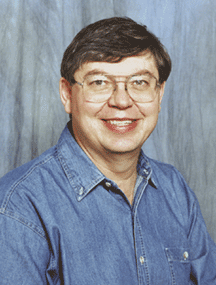Where Art And Science Are Compatible
Glen Ring And His View On Futures
by Jayanthi Gopalakrishnan
One of the nation's most respected market analysts with 34 years of experience in the commodity industry, Glen Ring brings a broad-based perspective to his work. He has been a producer/hedger, broker, trader, technical analyst, researcher and seminar speaker, and from 1987 through 1997 he was editor of the successful Trends In Futures (previously titled Commodity Close-Up) newsletter before leaving to concentrate on his own newsletter, View On Futures.Currently, he is president of Glen Ring Enterprises, which focuses on providing information, education, research, and support for traders, analysts, and other participants in the futures industry. STOCKS & COMMODITIES Editor Jayanthi Gopalakrishnan spoke with Glen Ring in a phone interview on June 9, 2006.

My rules are my rules, but I recognize what is going on, and in my view, art and science are compatible.
Glen, how did you get started?
I got interested in the markets when I was in high school in the early 1970s. Dad was a farmer, and I was in partnership with him raising livestock. He was aware of markets but not much, but he suggested that I keep an eye on them, so I did. About 1972, or shortly after, Successful Farming magazine had an article about the hog cycle. I think they called it a "three-and-a-half-year" cycle at the time. It made a lot of sense to me that every time prices were high, we didn't have many hogs, and every time prices were low, we had a lot of hogs.
Dad died when I was in college. I ended up farming and going to college at the same time, running back and forth 300 miles on the weekends. He had been sick for years and we were in debt. I could see I wasn't going to be able to outproduce other farmers who were in better financial shape than I was. That, together with my being intrigued with the commodity markets, was what really got me started. I felt I had my best chance to outmarket people.
What did you do?
At that time I was on two tracks. I was heavily involved in finding unique merchandising opportunities, like sunflowers for the birdseed markets. The other track was educational. The extension service at South Dakota State University offered a marketing class in agriculture. I would travel to those programs under a young farmer-rancher program. I started studying more about the markets. I was mathematically inclined, so I found fundamental analysis attractive. But I never could get that hog cycle story from the early 1970s out of my mind. There had to be something there. So I really started following the markets.
I learned that there was a psychological element to the markets. I started to collect information, trying to understand the markets. Later, I was able to make sense of it. I stayed on the farm until the late 1970s. I hooked up with a commodity firm to start trading and hedging and started to look at having a future there. When the major cycle indicated to me that commodities were topping in 1980, and we were having a hard time making ends meet when things were good, I could tell that we were due for a major cyclical decline in agriculture.
So what did you do?
I got out of farming and became a commodity broker. That was the only job I could find in the futures industry at the time. I hated it, but I met people who allowed me to develop my analytical skills. I studied the markets 12 to 18 hours a day. I became obsessed trying to figure out how markets worked.
What did you find out?
At first, I tried to apply statistics to the markets. That was very valuable, but I wasn't able to take a mathematical approach to it that satisfied me. I was trying to figure out how to predict the markets perfectly. I was after the wrong goal, but I learned a lot.
To make a long story short, I went through the idea that there were
various sciences that try to explain or match the markets in terms of an
analogous basis. Would mathematics explain it, or would a structure, like
the Elliott wave, explain the physiological terms of a behavior pattern?
I could only find one science that meshed with what markets were in terms
of distribution patterns.
...Continued in the August 2006 issue of Technical Analysis of STOCKS & COMMODITIES
Excerpted from an article originally published in the August 2006 issue of Technical Analysis of STOCKS & COMMODITIES magazine. All rights reserved. © Copyright 2006, Technical Analysis, Inc.
Return to August 2006 Contents